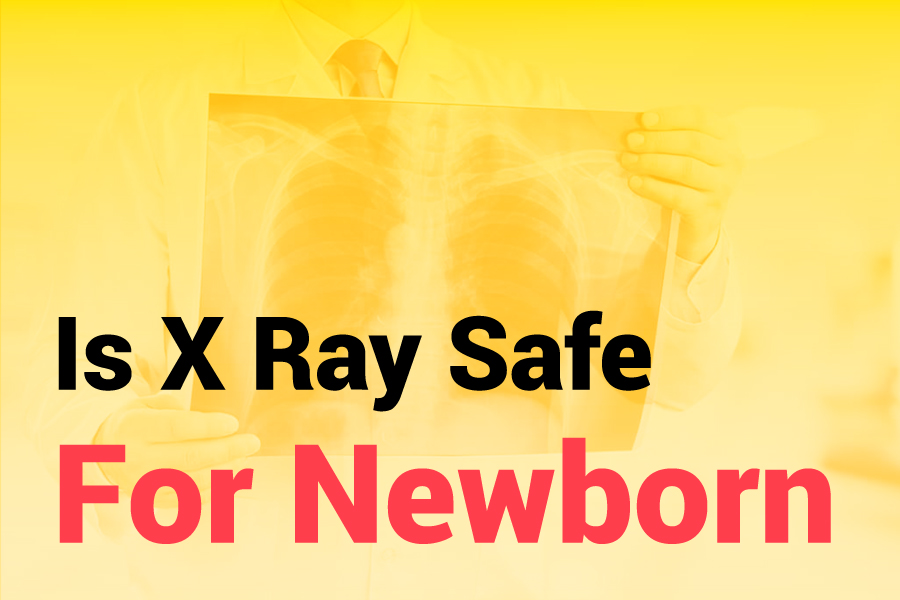The health and well-being of the newborn is such a sensitive issue that parents and caregivers usually burst with thousands of questions. The most common question regarding this is, “Is X-ray safe for newborns?” X-rays are a very important diagnostic tool in medicine because doctors can see ‘through’ the body for a diagnosis of many conditions. However, these very words bring shivers down the spine when they are to be done on a newborn baby. This article looks at this issue comprehensively in a bid to establish the safety of X-rays on newborn babies: risks, benefits, and expert opinions.
Is X-Ray Safe For Newborns?
Yes, X-rays are generally safe for newborns when necessary. The radiation dose is minimal, and strict safety measures are taken to protect the infant. The benefits of accurate diagnosis and treatment typically outweigh the low risks. Always consult with your pediatrician to ensure the best care for your baby.
Understanding X-Rays And Their Importance
X-rays have been a mainstay in the realm of medical diagnostics for quite over a century. They have allowed peeping inside the body, which is necessary for finding out a lot of diseases and conditions. For newborns, X-rays may be indicated to identify congenital anomalies, fractures, or some other problem that could not be found in a physical examination.
An X-ray involves very low doses of ionizing radiation being passed through the body and an image created on some special film or digital sensor. Even though these last two words, ‘radiation’ and ‘newborn’, when put together sound very scary, the doses used for medical imaging are almost always exceedingly small and the amount is fairly tightly controlled to reduce risks.
One of the most important and indispensable reasons why X-rays are considered necessary for newborns is to provide timely and accurate diagnoses. In particular, this is of rather crucial importance under emergency conditions, where a ‘time factor’ is critical. For instance, if a newborn is suspected of having some severe conditions, like pneumonia or some congenital heart disease, it is the X-ray that will give rescue hints for proper management.
While it most definitely does not throw a punch without a benefit, it’s always very critical to consider the associated risks. Ionizing radiation is capable of causing injury to living tissue. Therefore, radiation in an infant leads to more risk of harm as compared to an adult due to rapid cell division. Nevertheless, the risk of injury from a single, low-dose X-ray from an X-ray study is very low. Through technology improvements, equipment has also been designed in ways that create very minimal radiation exposures.
The radiologists and technicians consider a very strict measure of safety while taking X-rays of newborns, which include a prescription of the lowest dosage of radiations possible, other parts of the body shielded, and a restrained number of exposures given. Parents should allow detailed explanation of their concerns from the healthcare provider of the children about X-rays since this explains why the procedure is being conducted, and also to understand the measures taken to protect the babies.
Possible Risks Of X-Rays To Newborns
Ionizing Radiation and Effects: Ionizing radiation from X-rays can produce an effect that impairs the cells and their DNAs. Newborns are extremely prone because the cells in their bodies undergo a very fast division. The threat from a single X-ray, however, is very minimal.
Measures to Minimize Exposure: Medical specialists incorporate multiple measures to minimize the input of radiation to a newborn, which includes using a dose that is as low as feasible, shielding parts of the body not being imaged, and reducing the number of films exposed.
Weighing Risks against Benefits: Although some risks may exist due to the use of X-rays, often the benefits derived outweigh the risks. The diagnosis of serious conditions and starting treatment at an early stage proves life-saving, which justifies the controlled use of X-rays.
Alternatives to X-rays: In this respect, clinicians may also resort to other modalities of imaging that do not use ionized radiation in some instances, ultrasound or MRI. These are particularly useful in soft tissue imaging and are not indicated in all disease processes.
Long-term safety concerns: In fact, the doses used in medical imaging are known to be very low, evidenced by several research studies to date. The effective continuous method and protocol developments are further reducing any risks.
Benefits Of X-Rays To Newborns
X-rays are of tremendous assistance in diagnosing many conditions among newborns. They can easily reveal problems that would need quick medical attention such as fractures, congenital bone or lung abnormalities, or infections. This quick diagnosis is important in the treatment and management given to the patient.
- Accuracy of Diagnosis: X-rays provide clear images of the bones and some tissues, therefore, giving an identification of what the problem is.
- Emergency Situations: The use of X-rays for newborn care identifies life-threatening conditions promptly and also guides the administration of immediate medical care.
- Treatment Plan: If the condition is chronic, X-rays are very productive in the monitoring process and give a good platform to make changes in the treatment schedule.
- Low Cost: Compared to all other imaging techniques, X-ray is the least costly and is thus easily applicable at any time in clinics.
Role Of X-Rays In Pediatric Care
1. Reason for the Necessity of Accurate Diagnosis
Precise diagnosis is very crucial for pediatric care; it has a major role in receiving the correct treatment at the right time It gives essential information an X-ray that guides the making of medical care decisions and yields a better outcome.
2. Safety in Imaging
There is maximum safety guarding to avoid excess X-ray exposure to the newborn. This is through using the lowest radiation dose that can be used, and unwanted exposure to other parts of the body is shielded.
3. Amount of Roentgen is Used for Detecting
Parents and caregivers are very important in the process of diagnosis. They should, therefore, be at the forefront of communicating any concerns to health practitioners and explore the reasons for reviewing imaging.
Conclusion
Finally, though the thought of exposing a neonate to X-rays is disturbing, the studies are relatively safe due to medical need. Worrying for better diagnosis and treatment, for the most part, outweighs the minimal risks involved. There are strict safety protocols that are adhered to by healthcare professionals to ensure safety during an X-ray study of a neonate. Parents should have a sense of empowerment and discuss any concerns with their healthcare provider regarding the baby’s care to make informed decisions.
FAQ’s
Is It Safe To Expose A Newborn To An X-Ray?
Yes, X-rays are safe given the very low radiation dose and medical necessity. Other precautions are taken to avoid unnecessary exposure.
What Are The Risks Related To X-Rays For Newborns?
Baby’s little risk includes very slight cellular damage due to ionizing radiation; however, the risk from one X-ray is exceedingly low.
How Do Physicians Minimize The Danger Of Radiation Use In X-Rays?
They use the smallest dose of radiation; they shield the body parts from the radiation, and they minimize the number of exposures.
Should Parents Be Concerned About The Long-Term Risks Of X-Rays On Their Infant?
The doses used for medical imaging in radiology are very low and do not cause harm in the long term. With advances in technology and protocols, potential risks are further reduced.









